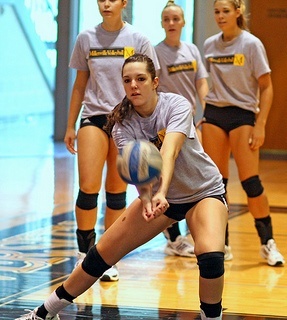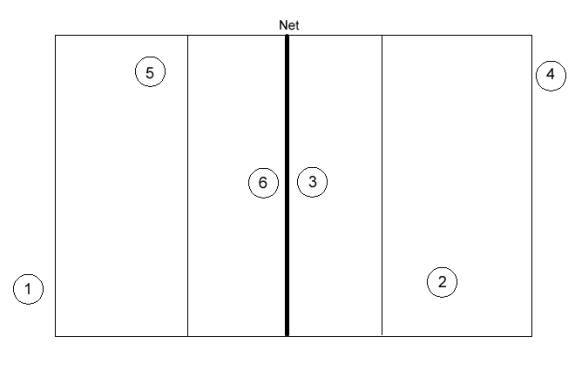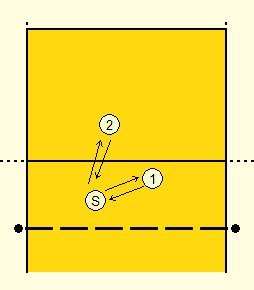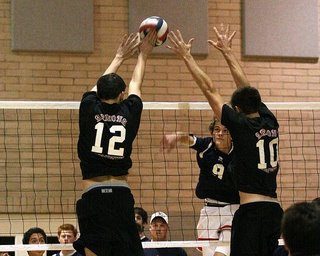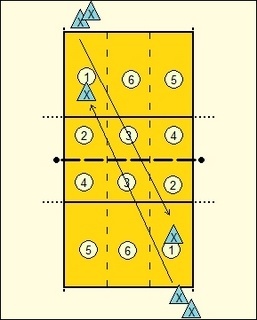Setting drills can be some of the most critical drills you will run. Why? Your setter is the person running your offense and it is critical for them to be the general on the court.
These drills can help you to develop the talent that you have for your setters. Make sure that you give them the opportunity to run the offense and practice their skills.
Here is the first setting drill:
Setting to Target
In this drill, the setter will start by setting to an attacker on the outside. It is best if the attacker can stand on a chair to simulate where they will be when jumping.
The setter is going to work on delivering the ball at the right spot. It is important to keep the set to the outside. This will make it more difficult for the middle blocker to rotate and be there to block. It will also give the hitter more angles to work with.
The setter MUST keep the ball off of the net. If the ball is too tight, the hitter is going to get blocked every time. A foot and a half is a good distance to keep it off of the net.
This setting drill focuses on getting the setter to be consistent with their sets. It is best to start this by throwing to the setter when they are stationary. Once they have got it down, throw the ball in the air in different locations so that they are setting on the move. Setting on the move is much more realistic to game circumstances.
Here is a video of the drill:
Back Set Drill
In this setting drill, we are going to work on getting the back set perfected. This drill can be done by putting the setter next to the net facing the outside hitter.
Someone will toss the ball to the setter and the setter will back set it to an opposite hitter on the front right.
Again, our purpose here is to work on delivering the ball to the right spot. It is important to keep the sets off of the net so that the hitter has angles to work with rather than being roofed each time.
The secret to the backset is in the delivery. If the setter is next to the net and parallel from the net, the ball should be set over the setter’s left shoulder. This will keep the setter from putting the ball too tight to the net.
The left shoulder is a great guideline since they cannot see where they are delivering it.
Practice this until you get it right on a consistent basis. Then practice moving the setter around as you did in the previous drill.

